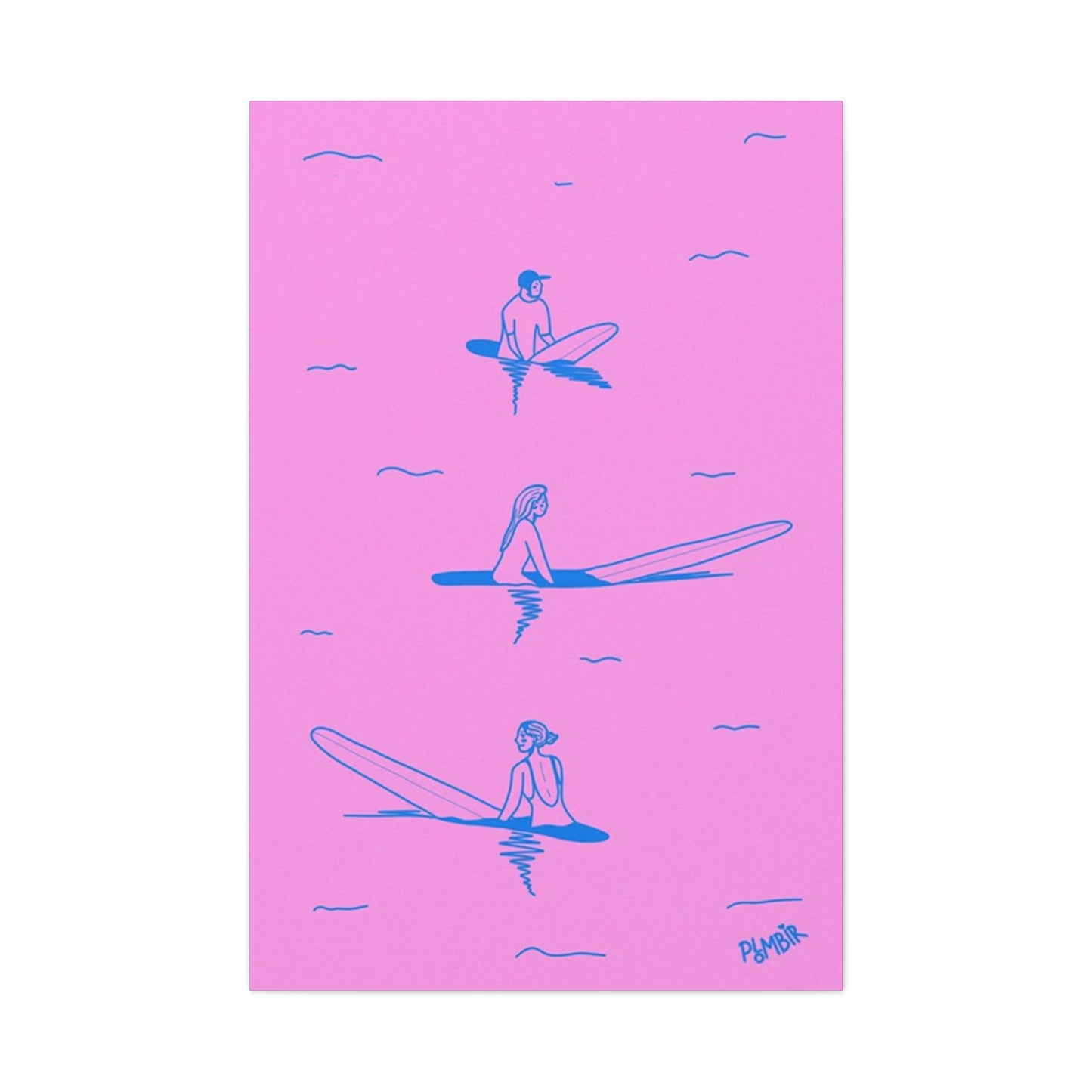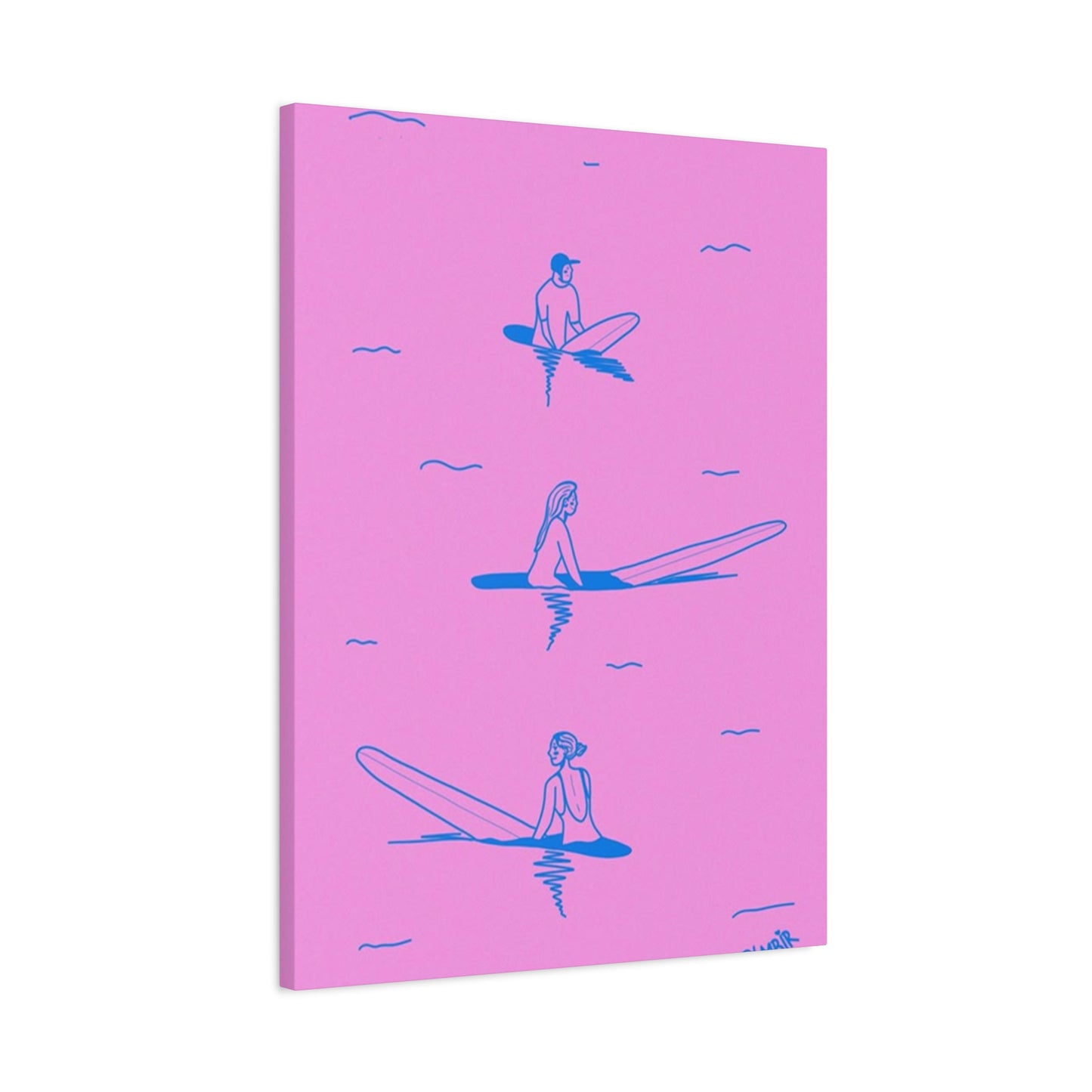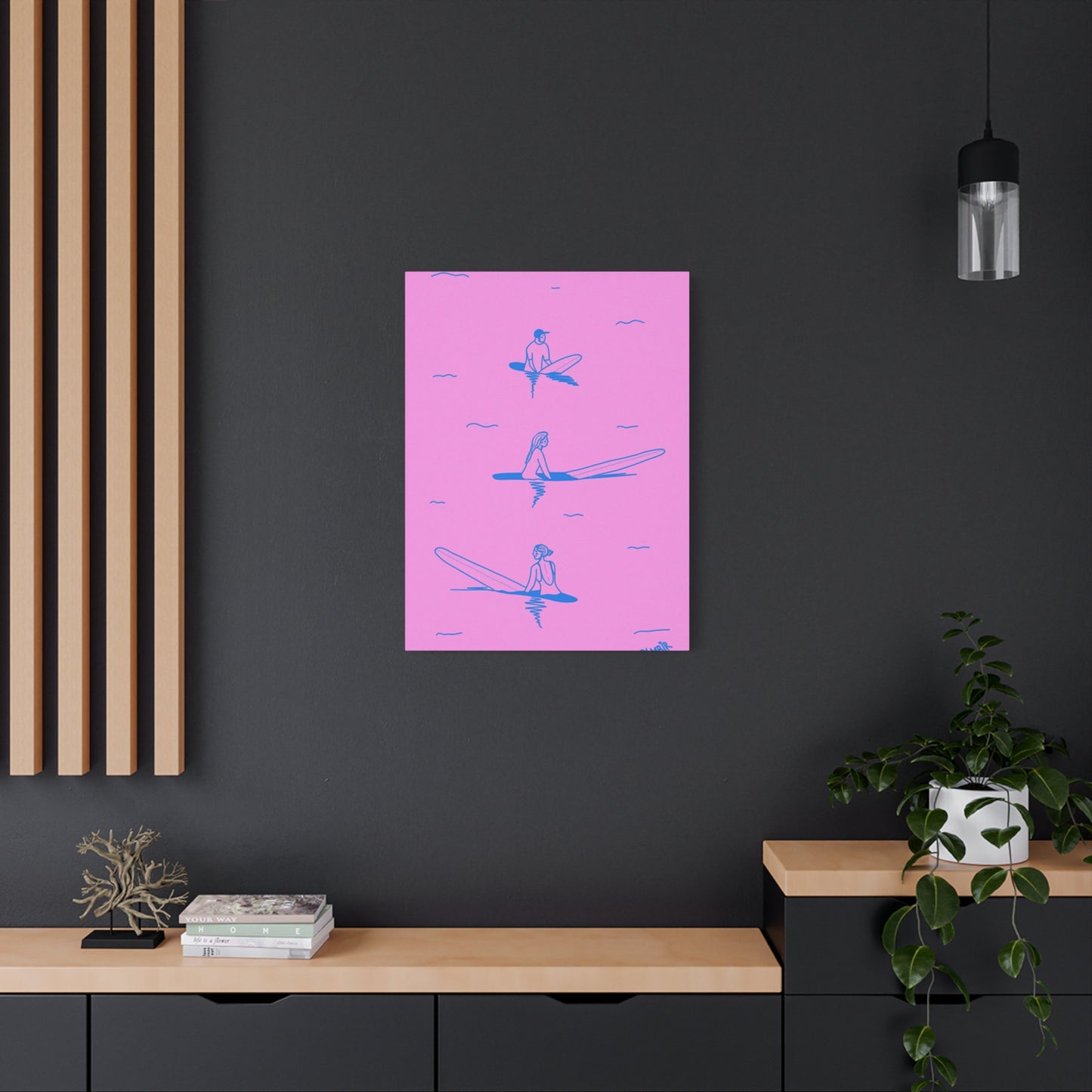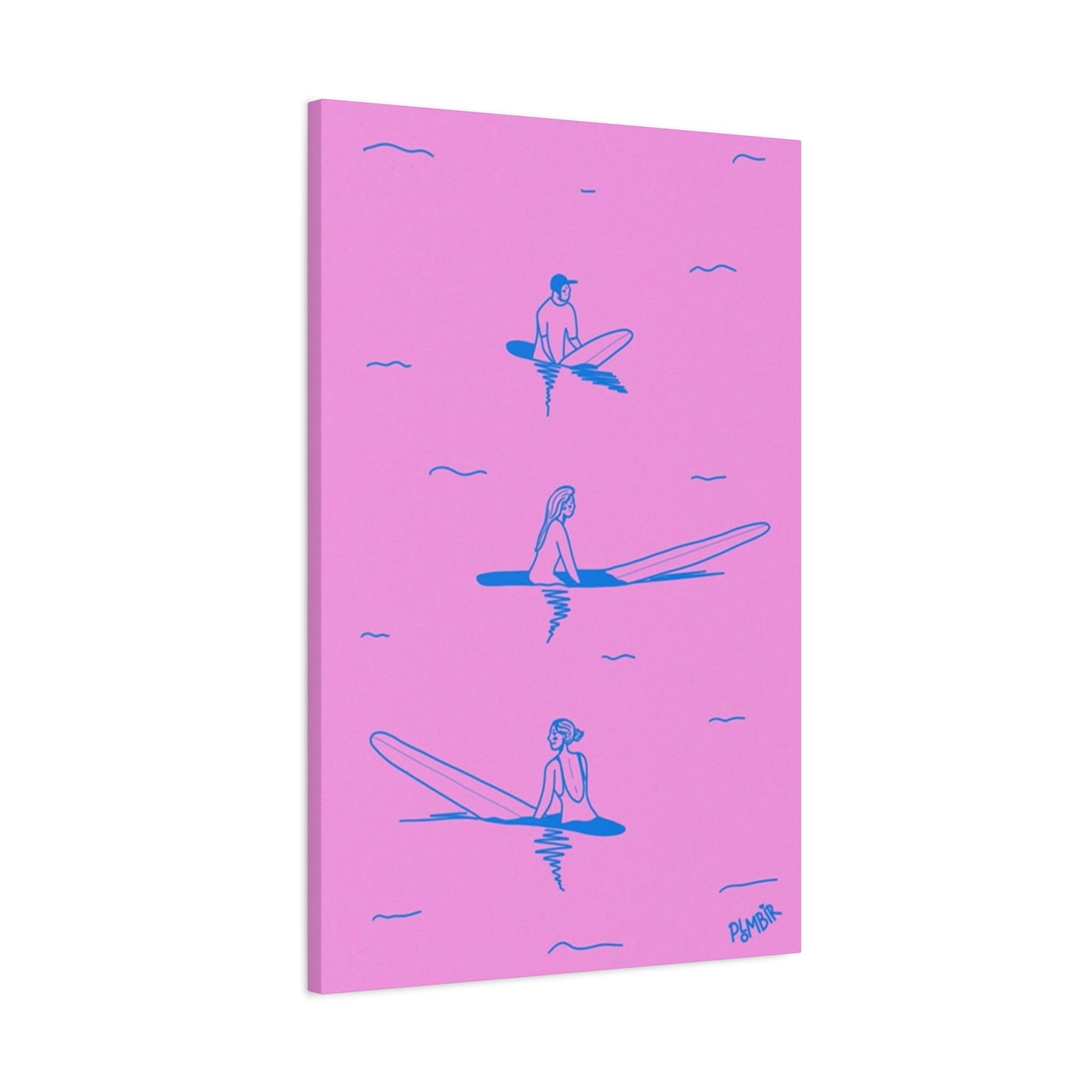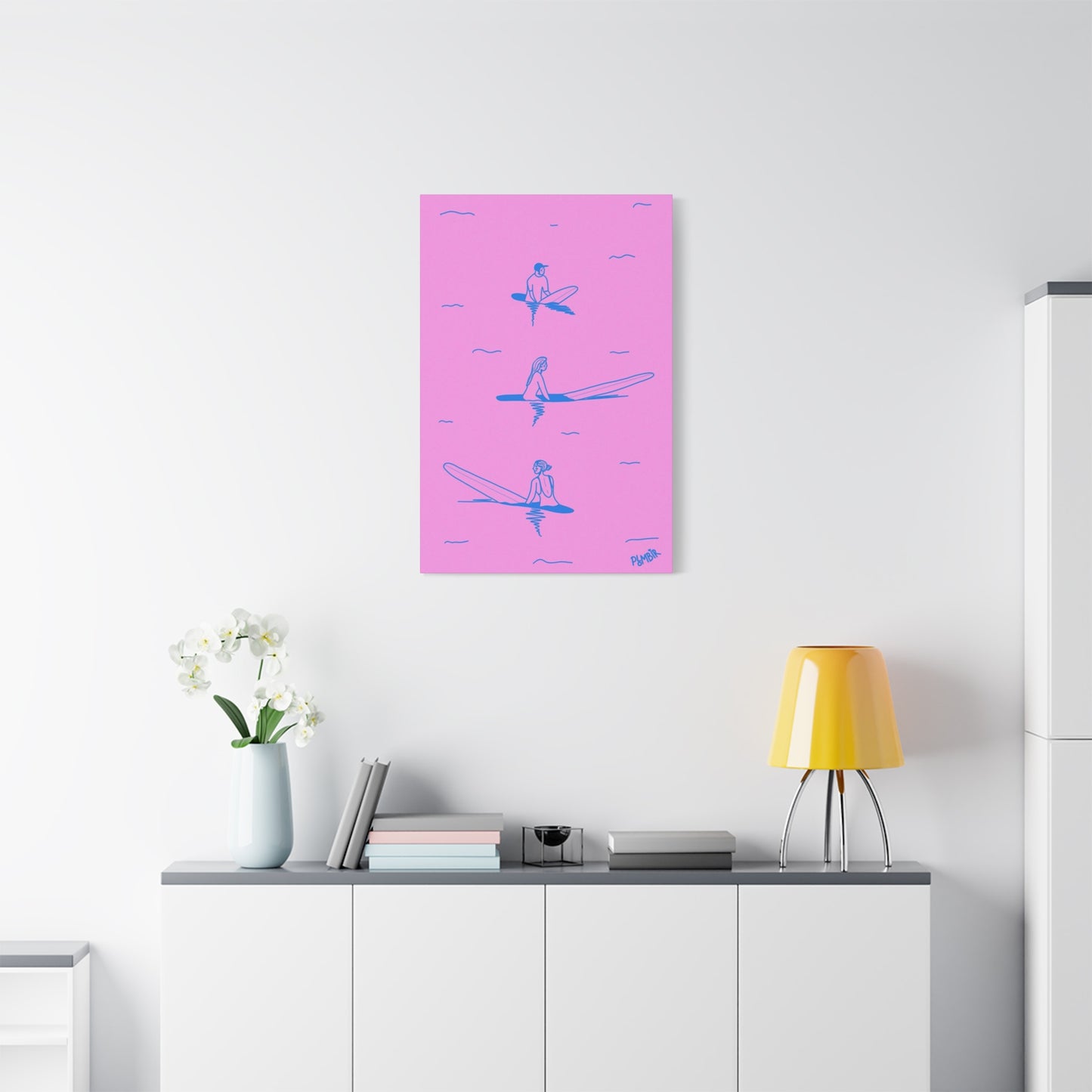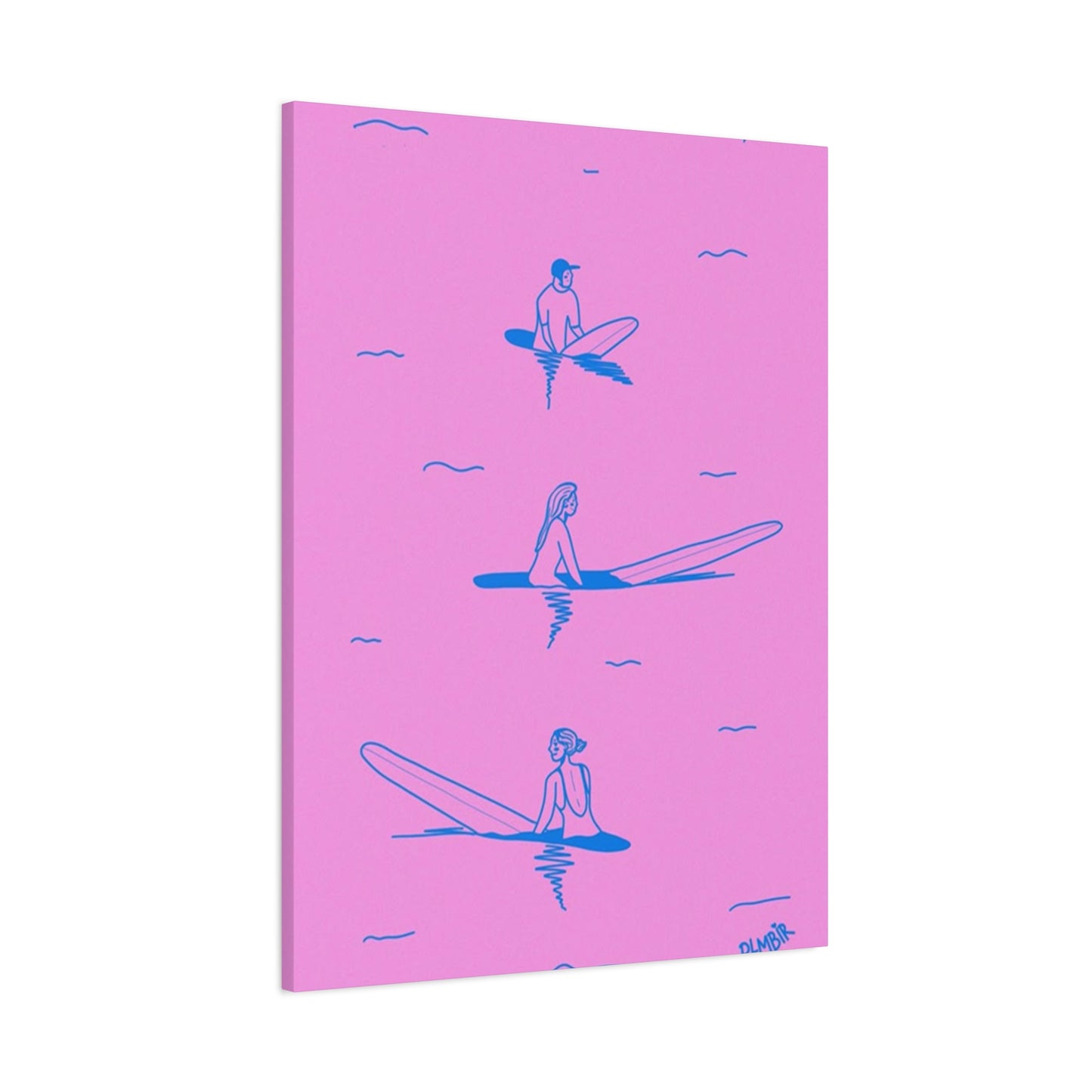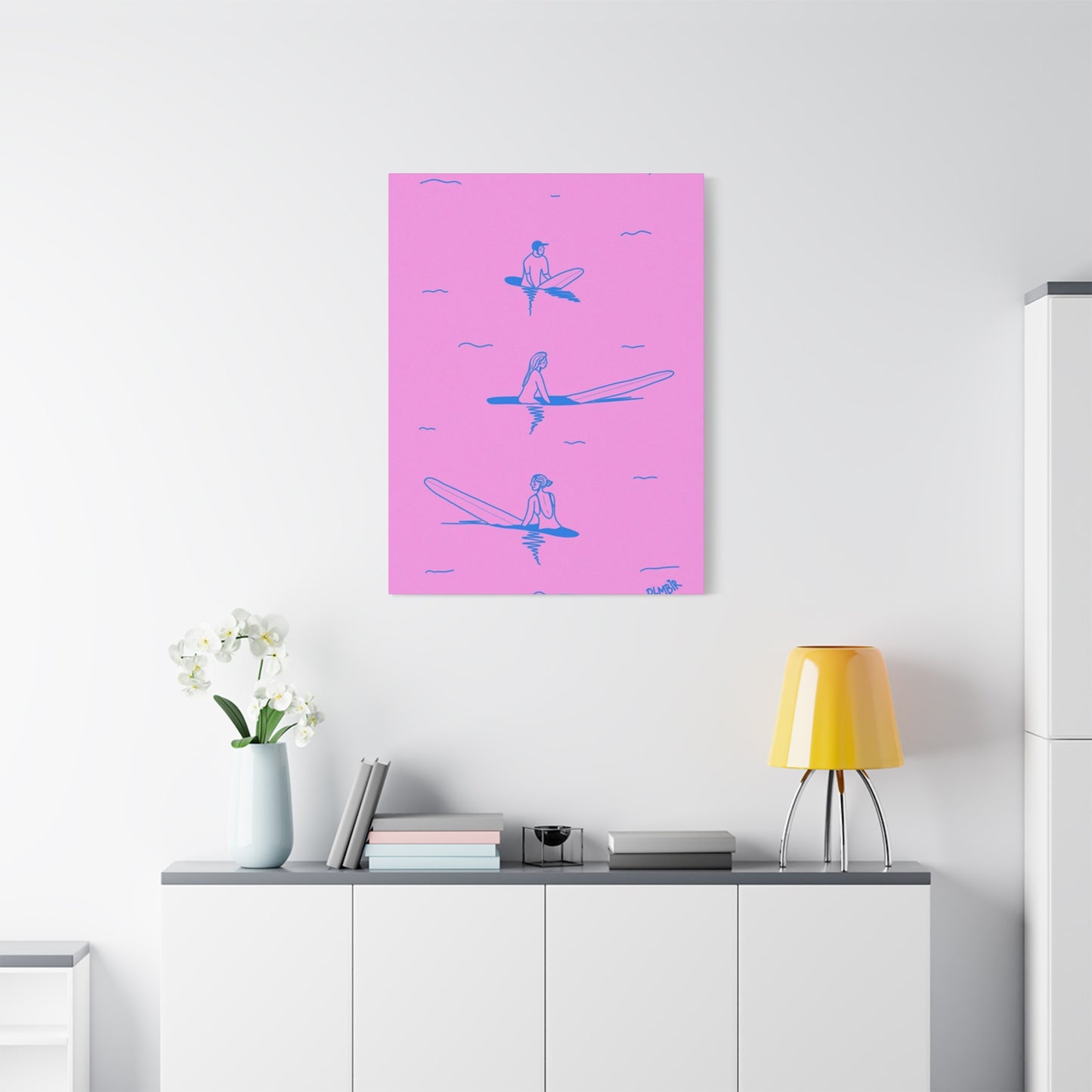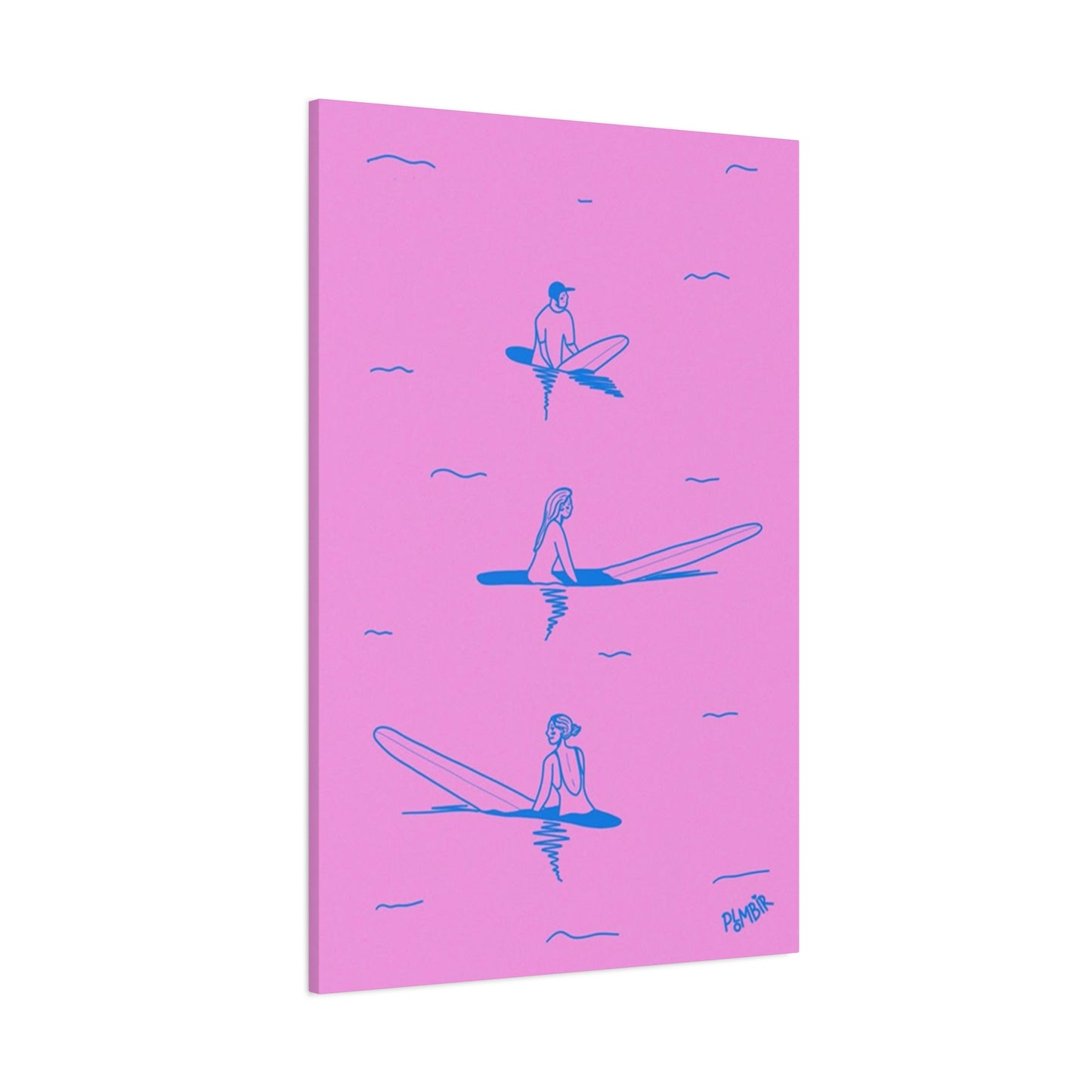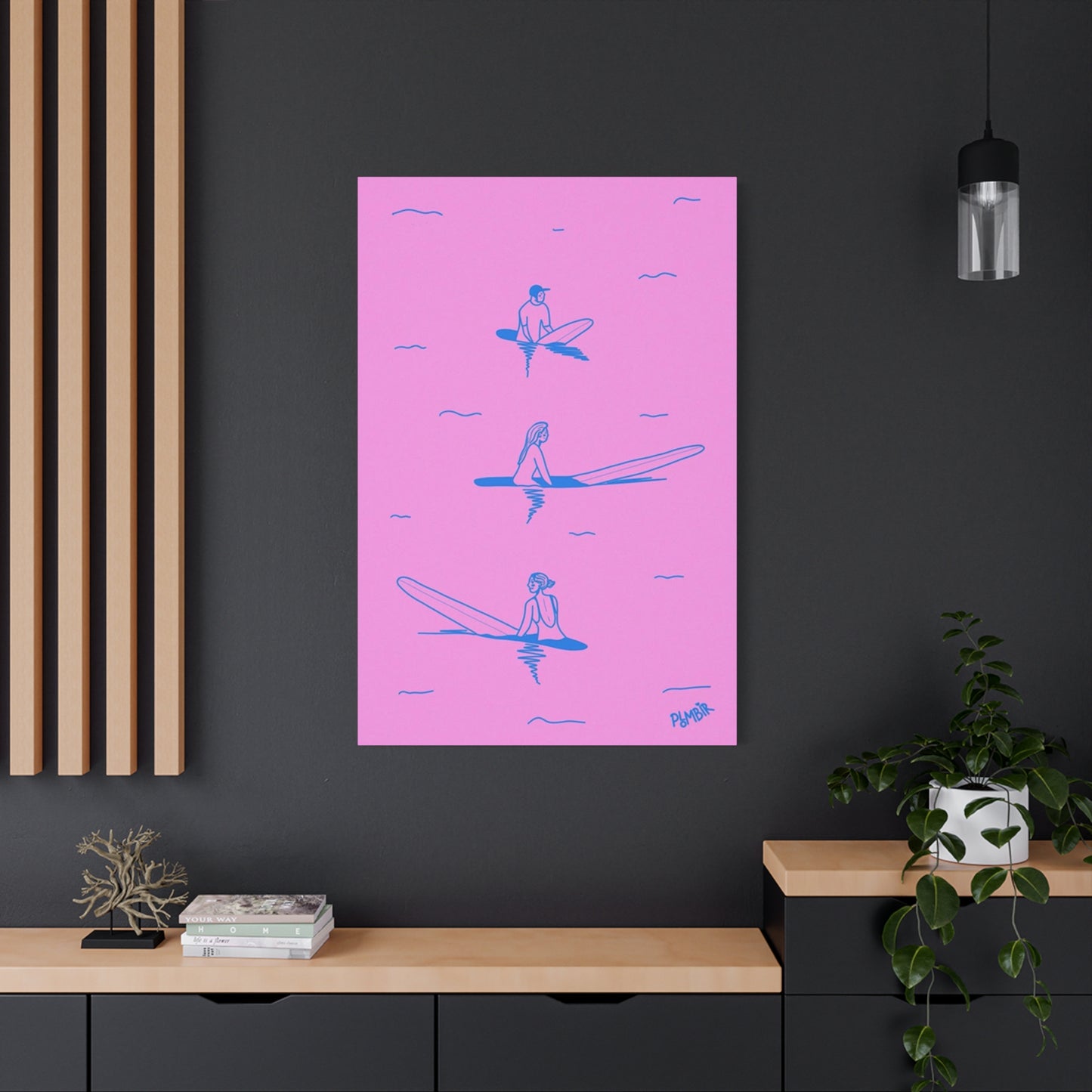Capturing the Calm: How Ocean painting Wall Art Can Evoke Serenity and Peace in Your Home
The allure of the ocean has captivated humanity for centuries, and few artistic expressions capture its raw energy and natural beauty quite like surfing ocean paintings. These dynamic artworks serve as windows to coastal paradises, bringing the exhilarating spirit of wave riding directly into your living spaces. Whether you're a dedicated surfer, a beach enthusiast, or simply someone who appreciates the aesthetic appeal of maritime art, these paintings offer an unparalleled way to infuse your home with coastal charm and athletic vigor.
Surfing artwork represents more than just decorative pieces hanging on walls; they embody a lifestyle, a passion, and a deep connection to the natural world. The rhythmic motion of waves, the athleticism of surfers carving through water, and the endless horizon where sky meets sea all combine to create visual narratives that resonate with viewers on multiple levels. These paintings capture fleeting moments of triumph, balance, and harmony between humans and nature, preserving them in timeless compositions that never lose their impact.
For homeowners seeking to transform their spaces into coastal sanctuaries, surfing ocean paintings provide the perfect solution. They inject personality into rooms while maintaining a sophisticated aesthetic that appeals to diverse tastes. From vibrant, action-packed scenes depicting surfers conquering massive swells to serene compositions showing solitary figures waiting for the perfect wave, these artworks span a remarkable range of moods and styles. Each piece tells its own story, inviting viewers to imagine themselves in those sun-drenched moments, feeling the spray of salt water and the warmth of tropical sunshine.
The versatility of surfing paintings makes them suitable for various interior design schemes. They complement minimalist modern spaces with clean lines and neutral palettes, add character to rustic beach cottages with weathered furniture and natural textures, and enhance traditional rooms seeking a touch of adventurous spirit. The color schemes typically found in these artworks—azure blues, seafoam greens, sandy beiges, and sunset oranges—naturally harmonize with coastal-inspired decor while providing enough visual interest to stand as focal points in any room.
Beyond their aesthetic contributions, surfing ocean paintings carry symbolic significance that enriches living environments. They represent freedom, the pursuit of passion, respect for natural forces, and the courage to face challenges head-on. These themes resonate particularly well in contemporary life, where many people seek reminders to embrace adventure, maintain balance, and stay connected to nature despite increasingly urban lifestyles. By incorporating these artworks into your home, you create daily touchpoints with values that inspire and motivate.
The technical execution of surfing paintings varies widely, offering collectors and decorators numerous options to match their preferences. Some artists favor photorealistic approaches, meticulously rendering every water droplet and muscle tension to create images that rival photographs in their precision. Others embrace impressionistic techniques, using bold brushstrokes and interpretive color choices to convey the emotional essence of surfing rather than literal accuracy. Abstract representations deconstruct the surfing experience into geometric forms, color fields, and gestural marks that suggest motion and energy without depicting recognizable figures. Each style brings distinct advantages to interior spaces, allowing for personalized expression that reflects individual tastes.
Bring the Waves Home with Surfing Art
Transforming your living space into a coastal haven becomes effortlessly achievable through the strategic incorporation of surfing artwork. These dynamic pieces serve as portals to seaside escapes, instantly elevating ordinary rooms into environments that pulse with oceanic energy and beachside charm. The process of bringing waves home through artistic expression goes far beyond simple decoration, creating immersive experiences that engage multiple senses and evoke powerful emotional responses.
The visual impact of surfing art immediately captures attention, drawing eyes across rooms and commanding focus in ways few decorative elements achieve. Bold compositions featuring surfers suspended in barrel waves create natural focal points that anchor entire design schemes. The inherent movement within these images generates visual energy that animates static spaces, preventing rooms from feeling stagnant or lifeless. This quality proves particularly valuable in frequently used areas like living rooms and family spaces where dynamic atmospheres encourage activity and engagement.
Color psychology plays a significant role in how surfing artwork affects residential environments. The predominant blues found in ocean scenes trigger associations with calmness, stability, and trust, creating soothing backdrops for daily life. Greens suggest growth, renewal, and harmony with nature, reinforcing wellness-oriented mindsets. Sandy neutrals provide grounding warmth that balances cooler tones while maintaining coastal authenticity. Strategic pops of vibrant color—bright surfboard hues, sunset oranges, tropical flora—inject playfulness and prevent overly sedate atmospheres. Understanding these psychological effects enables intentional selection of pieces that support desired emotional environments.
Scale considerations dramatically influence how surfing artwork transforms spaces. Oversized canvases spanning several feet create immersive experiences that envelop viewers in depicted scenes, essentially functioning as windows to oceanfront vistas. These statement pieces work magnificently in spacious rooms with substantial wall expanses, where their impressive dimensions match architectural scale. Medium-sized works offer versatility, functioning effectively as standalone features or components within gallery wall arrangements. Smaller pieces suit intimate settings, personal spaces, or supplementary roles within larger collections. Mixing scales within coordinated displays creates visual hierarchy and sustained interest that single-size arrangements lack.
Textural dimensions of surfing paintings contribute tactile interest often overlooked in purely visual assessments. Impasto techniques where thick paint creates raised surfaces catch light variably throughout the day, producing ever-changing appearances that reward repeated viewing. Canvas weaves visible through thinner paint applications add organic irregularity that contrasts with smooth wall surfaces. Some artists incorporate mixed media elements—sand, shell fragments, resin—that introduce literal beach components into artworks, blurring boundaries between representation and reality. These textural qualities engage viewers beyond simple observation, encouraging closer examination and physical connection with pieces.
Lighting design significantly affects how surfing artwork presents in spaces, with proper illumination enhancing colors, emphasizing textures, and creating ambiance. Natural light from windows produces authentic, pleasing illumination that changes throughout the day, creating dynamic relationships between artwork and environment. Artificial lighting requires more deliberate planning, with options including picture lights mounted directly on frames, track lighting focused on specific pieces, or ambient room lighting that bathes entire walls. LED technologies offer energy efficiency and adjustable color temperatures that can emphasize different aspects of paintings, from cool tones highlighting blues and greens to warmer settings bringing out sunset hues and sandy beaches.
Why Surfing Paintings Energize Your Space
The energizing effect of surfing paintings on interior environments stems from multiple psychological, compositional, and thematic factors that work synergistically to activate spaces and invigorate inhabitants. Understanding these mechanisms reveals why these artworks consistently produce environments that feel more alive, dynamic, and emotionally uplifting than those without such powerful visual elements.
Movement represents the most obvious energizing quality in surfing artwork. Unlike static landscapes or still lifes depicting motionless subjects, surfing scenes capture dynamic moments where multiple forces interact—wave momentum, human athleticism, gravitational pull, and resistance between water and board. This frozen motion creates visual tension that engages viewers' minds as they unconsciously complete the action, imagining the next moment after the captured instant. This mental engagement activates cognitive processes beyond passive observation, creating ongoing interaction between viewer and artwork that maintains interest across repeated viewings.
The athletic prowess displayed in surfing images provides aspirational content that motivates and inspires. Viewers respond to depicted strength, balance, and skill, unconsciously processing these qualities as admirable and desirable. This response triggers subtle motivational effects, encouraging viewers toward their own physical activities and goal pursuits. The effect operates similarly to how sports imagery in gyms and athletic facilities creates motivating environments, though surfing artwork's aesthetic sophistication makes it suitable for residential settings while maintaining these psychological benefits.
Color intensity in many surfing paintings contributes significant energizing effects through direct neurological responses to visual stimuli. Vibrant blues stimulate mental clarity and focus, greens promote balanced energy and renewal, while warm accents of orange and yellow trigger associations with sunlight and warmth. These chromatic stimulations occur below conscious awareness, affecting mood and energy levels through biological pathways evolved over millennia of environmental adaptation. Selecting pieces with appropriately energetic color palettes amplifies these natural responses, creating spaces that actively support desired mental states rather than passively existing as neutral backgrounds.
Light depiction within surfing artwork influences perceived brightness and spaciousness in rooms. Paintings showing sunlight glittering on water surfaces, backlighting spray, or illuminating barrel interiors introduce additional light sources beyond actual room lighting. These painted light effects create illusions of increased brightness that make spaces feel more expansive and uplifting. The psychological impact mirrors that of actual windows and natural light, providing similar benefits in rooms with limited fenestration or unfortunate orientations away from sunlight.
Compositional dynamics in surfing paintings employ specific artistic techniques that generate visual energy. Diagonal lines created by wave faces and surfer positioning create movement and tension more effectively than horizontal or vertical orientations. Asymmetrical compositions where primary subjects occupy off-center positions produce more engaging, dynamic arrangements than centered, symmetrical alternatives. Varied depth of field where foreground elements remain sharp while backgrounds soften creates spatial recession that pulls viewers into scenes. These formal qualities, often operating below conscious recognition, contribute significantly to artwork's energizing effects.
Thematic associations with outdoor recreation, natural settings, and adventure lifestyle contribute psychological energy beyond visual factors. Surfing symbolizes freedom from constraints, physical expression, and harmonious interaction with powerful natural forces. These associations trigger mental connections to positive experiences and aspirational identities, elevating mood and increasing mental energy. For actual surfers, the artwork triggers specific memories and anticipation of future sessions, maintaining psychological connections to their passion even when circumstances prevent active participation. For non-surfers, the images provide vicarious access to adventurous experiences that broaden mental horizons and counter monotonous routines.
Ocean Surfing Art for a Coastal Vibe
Creating authentic coastal atmospheres within residential spaces relies heavily on carefully selected ocean surfing artwork that captures and communicates the essential qualities of seaside environments. These pieces serve as foundational elements around which entire design schemes develop, providing visual references that guide subsequent choices in furnishings, colors, textures, and accessories. Understanding how to leverage surfing art effectively ensures cohesive, convincing coastal interiors that transport inhabitants and visitors to beachfront settings regardless of actual geographic locations.
The authenticity of coastal vibes depends significantly on artwork selection reflecting genuine understanding of ocean environments rather than generic beach clichés. Paintings depicting specific surf breaks with accurate wave formations, appropriate vegetation, and realistic lighting conditions communicate credibility that generic beach scenes lack. This authenticity resonates particularly with knowledgeable surfers and frequent coastal visitors while avoiding the kitschy appearance that undermines serious design intentions. Researching actual surf locations and selecting artwork depicting real places rather than idealized fantasies ensures groundedness that elevates entire aesthetic approaches.
Color palette selection in ocean surfing artwork directly determines the mood and intensity of resulting coastal vibes. Turquoise and aquamarine waters suggest tropical destinations like Indonesia, Hawaii, or the Caribbean, creating warm, vacation-oriented atmospheres. Deeper navy and slate blues evoke colder water destinations such as Northern California, Oregon, or Ireland, producing more dramatic, powerful coastal feelings. Gray-green tones indicate temperate zones and changeable conditions, supporting subtle, sophisticated coastal interpretations. Sandy beaches range from bright white coral-based sands to volcanic black shores, each creating distinctly different aesthetic effects. Matching artwork color palettes to desired coastal subtypes ensures cohesive expressions rather than muddled combinations lacking clear direction.
The relationship between surfing artwork and architectural features significantly affects how successfully coastal vibes manifest. Homes with abundant natural light, open floor plans, and strong indoor-outdoor connections naturally support coastal themes, with artwork reinforcing existing architectural advantages. Conversely, darker spaces with limited windows require more strategic approaches where brighter artwork compensates for environmental limitations. Vaulted ceilings accommodate oversized vertical pieces that maximize impact, while low, broad rooms benefit from horizontal panoramic compositions that emphasize expansiveness. Understanding these architectural relationships enables selections that work with rather than against existing spatial qualities.
Layering multiple pieces creates richer coastal narratives than single artworks can achieve alone. Gallery walls combining various surf scenes, ocean details, marine life, and coastal landscapes build complex visual stories that maintain interest across extended viewing. These collections allow exploration of different aspects of coastal life—competitive surfing, recreational beach activities, natural marine environments, coastal weather phenomena—creating multifaceted representations that avoid one-dimensional interpretations. Thoughtful curation ensuring stylistic coherence despite subject variety prevents chaotic appearances, maintaining sophisticated presentations that communicate clear aesthetic intentions.
Seasonal variations in depicted surfing conditions allow artwork selections that either emphasize year-round coastal living or celebrate specific seasonal aspects. Summer scenes with glassy conditions, bright sunshine, and minimal clothing suggest vacation environments and carefree leisure. Winter imagery showing larger swells, dramatic skies, and wetsuit-clad surfers communicates serious dedication and powerful natural forces. Transitional seasons with variable conditions and changing light support dynamic, ever-changing coastal interpretations. Selecting pieces matching either actual local seasons or desired psychological environments allows customization supporting specific intentions.
The Thrill of Surfing in Ocean Paintings
Scale relationships between surfers and waves directly communicate danger, challenge, and thrill levels depicted in paintings. Massive waves dwarfing human figures create awe-inspiring compositions that emphasize courage and skill required for big wave surfing. More manageable waves showing greater human control suggest playfulness and mastery that inspire confidence. The ratio between human and wave size immediately communicates story context, allowing viewers to assess depicted scenarios and respond with appropriate emotional engagement. Artists manipulate these relationships to target specific audience responses from relaxation to exhilaration.
Facial expressions and body language visible in figurative surfing paintings provide crucial emotional information that connects viewers to depicted experiences. Concentrated focus conveys intensity and demand for absolute attention that characterizes critical surfing moments. Visible strain shows physical effort required for challenging maneuvers. Expressions of joy and triumph capture successful rides and personal breakthroughs. Even when figures appear small within compositions, these human elements create empathetic connections that transform abstract wave imagery into relatable human experiences that resonate across diverse audiences.
Color intensity and saturation levels contribute to perceived excitement through direct neurological responses to visual stimuli. Highly saturated, vibrant colors create energetic, stimulating effects that mirror the heightened sensory experience of actual surfing. More muted, naturalistic palettes produce calmer, more contemplative responses suitable for relaxation-oriented spaces. Strategic color placement draws attention to focal points and guides viewing paths through compositions. Understanding these chromatic effects enables intentional selection of pieces producing desired psychological impacts in specific room contexts.
The depiction of risk and consequence in surfing paintings adds dramatic tension that engages viewers intellectually and emotionally. Precarious positions showing surfers navigating critical sections communicate real danger and potential failure. Massive walls of water suggest consequences of mistakes, adding stakes that increase engagement. Close proximity to reef, rocks, or other hazards heightens tension and demonstrates courage. These risk elements create narrative suspense even in frozen moments, as viewers imagine potential outcomes beyond captured instants. This engagement sustains interest across repeated viewings as imagination supplies varying continuations.
Weather conditions depicted in paintings contribute substantially to conveyed excitement and mood. Clear, calm conditions suggest ideal circumstances and pure enjoyment. Windy spray and choppy surfaces communicate challenging, demanding situations requiring advanced skills. Dramatic skies with threatening clouds add atmospheric tension and suggest changing conditions. Rain and storm elements introduce environmental challenges beyond wave size alone. These meteorological details enrich narratives and provide contextual information that sophisticated viewers appreciate and respond to.
Sequential arrangements of multiple paintings can tell complete stories or document progression from paddle-out through completed rides. Gallery walls showing different stages of wave encounters create narrative arcs that engage viewers over time. Series depicting single surfers across multiple maneuvers demonstrate skill development and complete experiences. Varied perspectives of identical moments show different viewpoints of shared experiences. These sequential presentations leverage humans' natural affinity for storytelling, creating more engaging displays than random assemblages of unrelated images.
The technical execution quality directly impacts conveyed excitement through demonstration of artistic mastery mirroring depicted athletic mastery. Confident, bold brushwork suggests the decisive action surfing requires. Precise detail work shows the focused attention surfers maintain. Dynamic compositions reflect the constantly shifting conditions surfers navigate. Viewers unconsciously recognize these parallels, experiencing aesthetic excitement that reinforces subject matter excitement. This synergy between form and content characterizes the most successful surfing artwork.
Cultural symbols within surfing paintings add layers of meaning that deepen engagement for knowledgeable viewers. Classic longboard designs reference surfing's heritage and traditional approaches. Modern shortboard shapes communicate high-performance surfing and progressive attitudes. Specific board brands carry associations with particular riders or movements. Wetsuit presence indicates cold water dedication. These details create subtext that rewards careful observation and insider knowledge while remaining visually appealing to general audiences.
Environmental elements beyond waves and surfers contribute to overall thrilling atmosphere through ecological context. Dolphins or whales sharing waves add magical interspecies moments. Tropical vegetation frames scenes in lush abundance. Rocky coastlines suggest powerful forces shaping landscapes. Pristine water clarity communicates untouched natural environments. These contextual elements enrich pure action with environmental awareness that appeals to contemporary sensibilities regarding nature conservation and wilderness appreciation.
Creating a Relaxed Space with Surfing Wall Art
While surfing artwork often emphasizes excitement and energy, it possesses equal capacity to create profoundly relaxing environments when selected and displayed with calming intentions. The ocean's dual nature as both powerful force and peaceful presence allows artists to capture contemplative moments, serene conditions, and meditative aspects of surfing culture that foster tranquility and mental restoration in residential spaces. Understanding how to leverage these calming qualities enables creation of sanctuaries that promote wellbeing through visual serenity.
Subject selection proves crucial when prioritizing relaxation over excitement, with certain surfing scenarios naturally conveying peaceful qualities. Dawn sessions with glassy water surfaces mirror-smooth and reflecting pastel skies create ethereal, dreamlike atmospheres that soothe viewers. Solitary surfers sitting peacefully on boards waiting for waves communicate patience, presence, and meditative mindfulness. Empty lineups showing perfect waves breaking without human presence emphasize natural beauty and rhythmic patterns. Sunset scenes with warm light and completed sessions suggest satisfaction and peaceful closure. These contemplative subjects provide visual anchors for relaxation-oriented spaces.
Compositional balance and symmetry contribute significantly to peaceful feelings through visual stability and harmony. Centered horizons create equilibrium that feels grounding and secure. Balanced wave formations framing central focal points prevent visual tension. Gentle curves rather than sharp angles produce flowing movements that eyes follow comfortably. Minimal compositional elements reduce visual noise and mental processing demands. These formal qualities create restful viewing experiences that require minimal cognitive effort, allowing minds to relax rather than actively engage with complex visual puzzles.
Color palette selection for relaxation emphasizes cooler, softer tones that trigger calming neurological responses. Pale blues suggesting clear shallow water or sky create peaceful, expansive feelings. Soft greens evoke renewal and natural harmony. Gentle purples and lavenders in dawn or dusk skies add dreamlike qualities. Neutral sandy tones ground compositions without stimulation. Avoiding intense saturation and high contrast maintains visual gentleness that supports relaxation rather than stimulation. These chromatic choices work unconsciously on nervous systems, promoting physiological relaxation that enhances psychological effects.
Lighting qualities depicted in paintings dramatically affect emotional tone and relaxation potential. Diffused, even illumination without harsh shadows creates visual gentleness that translates to emotional softness. Soft golden hour light wraps scenes in warmth without intensity. Overcast conditions with muted tones suggest quiet, introspective moods. Subtle backlighting creating gentle glows rather than dramatic silhouettes maintains serenity. These lighting choices avoid the visual excitement of dramatic contrasts while providing sufficient interest to maintain engagement without demanding attention.
Scale considerations for relaxation-oriented pieces differ from excitement-focused selections, with appropriately sized works preventing overwhelming visual presence. Medium-scale pieces provide substantial visual interest without dominating spaces to degrees that prevent relaxation. Horizontal orientations emphasize restful landscape formats and create visual expansion suggesting breathing room. Avoiding oversized dramatic pieces prevents spaces from feeling visually heavy or demanding. The goal involves creating presence without pressure, allowing artwork to enhance environments without commanding constant attention.
Placement strategies for relaxation-focused surfing artwork prioritize locations where peaceful contemplation naturally occurs. Bedrooms benefit enormously from calming surf scenes that support pre-sleep routines and morning awakenings. Reading nooks and meditation spaces gain from artwork reinforcing contemplative intentions. Bathrooms transform into spa-like retreats through strategically placed ocean imagery. Home offices benefit from relaxing pieces providing visual breaks from concentrated work. These location choices align artwork qualities with functional requirements, creating synergies that amplify intended effects.
The integration of calming surfing artwork with other relaxation-supporting design elements creates holistic environments where multiple factors work synergistically. Comfortable seating invites extended relaxation while viewing artwork. Soft textiles in complementary colors enhance visual harmony. Natural materials including wood and stone echo artwork's organic subject matter. Gentle ambient lighting allows artwork appreciation without harsh illumination. Minimal clutter maintains visual cleanliness that prevents distraction. Sound elements including water features or nature recordings create multisensory relaxation that visual components initiate.
Surfing Paintings: Adding Motion to Your Walls
Static walls in residential spaces often lack the dynamic quality that makes environments feel truly alive and engaging. Surfing paintings address this limitation by introducing captured motion that animates surfaces and transforms passive viewing into active visual experiences. Understanding the techniques artists employ to suggest movement and the psychological effects these create enables strategic selection and placement that maximizes kinetic impact in interior design applications.
The fundamental challenge of depicting motion in static media has occupied artists throughout history, with various movements and techniques developing to address this perceptual puzzle. Surfing paintings benefit from inherently kinetic subject matter where multiple elements—waves, water, spray, surfers, boards—simultaneously move in coordinated yet complex patterns. This multi-layered motion provides rich material for artistic interpretation and offers numerous opportunities for suggesting dynamism through composition, color, and brushwork.
Directional lines within compositions create visual pathways that guide eyes through paintings in specific sequences, effectively creating temporal dimension within spatial art. Wave faces forming strong diagonals from lower corners to upper opposites pull viewers' gazes upward, mimicking the actual movement of rising waves. Surfers positioned along these lines reinforce directional flow and create narrative movement from entry through completed rides. Background elements receding toward horizons establish depth and suggest continuing motion beyond visible frames. These compositional strategies transform rectangular canvases into stages where visual stories unfold across time.
Blur and focus manipulation creates motion suggestion through optical effects mimicking how human vision processes speed. Selectively blurred backgrounds while maintaining sharp foreground subjects suggest rapid movement through space, with unfocused areas representing motion-affected perception. Conversely, blurred spray or water elements against sharp environmental features emphasize elemental movement and frozen milliseconds. These techniques leverage viewers' experiential understanding of how vision functions during motion, creating authentic feeling despite technical impossibility of actual movement within paintings.
Color gradation and tonal transitions suggest movement through progressive change across surfaces. Waves depicted with gradually shifting blues from deep water to foamy white crests show transformation in progress. Sky colors transitioning from horizon to zenith indicate atmospheric depth and temporal progression through changing light. Water spray rendered with subtle opacity variations suggests dispersion and momentum. These graduated effects prevent static, flat appearances and introduce dimensional depth that implies ongoing processes rather than frozen instants.
Brushwork energy directly communicates artist gesture and, by extension, subject motion through visible paint application. Bold, sweeping strokes suggest forceful movements and physical energy. Short, staccato marks create vibration and intensity. Smooth, blended areas convey fluid transitions and continuous flow. The physical act of painting becomes visible record of motion, creating kinetic energy through marks themselves independent of depicted subjects. This expressive dimension adds layers of movement beyond representational content alone.
Multiple figure positioning within compositions creates implied sequential movement similar to time-lapse photography. Showing surfers at different stages of wave encounters suggests progression and ongoing action. Varied positions within single paintings document complete rides from paddle-in through exit. These multiple moments collapsed into unified compositions create narrative arcs that unfold as viewers scan across surfaces. The technique allows comprehensive storytelling within single frames that static single-moment captures cannot achieve.
Action emphasis through compositional weight and contrast draws attention to specific kinetic moments within complex scenes. Highest contrast areas naturally attract eyes first, allowing artists to direct attention to crucial movement moments. Largest or most detailed elements similarly command priority viewing. Strategic placement of these focal points controls viewing sequences and emphasizes particular aspects of depicted motion. This intentional hierarchy creates structured visual experiences that communicate specific narratives and motion sequences.
The psychological perception of motion in static images involves cognitive completion where brains automatically extend visible moments into imagined sequences. This neural tendency evolved to predict trajectories and anticipate outcomes for survival advantages. Surfing paintings leverage this automatic processing, requiring minimal suggestion for viewers to mentally complete actions and experience implied motion. Understanding this perceptual tendency enables artists to efficiently suggest extensive movement with economical means, creating powerful effects through strategic minimal intervention.
Environmental context supporting depicted motion enhances believability and impact through consistent physical logic. Wind effects showing flags, vegetation, or spray direction corroborate surfer and wave movements. Shadow angles indicating sun position provide temporal context. Water surface textures suggesting wind, current, or wake patterns create comprehensive motion narratives. These supporting details build convincing environments where primary movements make logical sense, increasing viewer immersion and suspension of disbelief.
Beach-Inspired Surfing Art for Your Home
Transforming residential spaces into beach-inspired havens requires thoughtful integration of surfing artwork that authentically captures coastal essence while avoiding clichéd decorative pitfalls. The distinction between sophisticated beach-inspired design and heavy-handed coastal kitsch lies in restraint, quality, and genuine understanding of beach culture. Surfing paintings provide ideal anchors for these schemes when selected with discerning taste and integrated within balanced, cohesive design approaches.
Authentic beach inspiration draws from actual coastal environments rather than commercialized stereotypes, referencing specific regional characteristics and genuine surf culture elements. Artwork depicting real surf breaks with accurate geographical features communicates credibility and personal connection. Regional architectural styles, native vegetation, and characteristic light qualities provide contextual authenticity. Cultural elements including local surf traditions, historical contexts, and community practices add depth beyond surface aesthetics. This grounded approach creates environments celebrating actual beach life rather than generic fantasy versions lacking substance.
Material selection supporting beach-inspired themes extends surfing artwork impact through tactile and visual coherence. Natural fibers including jute, sisal, linen, and cotton echo organic coastal materials and provide textural contrast to smooth painted surfaces. Wood elements weathered or deliberately distressed suggest driftwood and sun-bleached structures. Woven materials reference fishing nets, rope, and traditional crafts. Glass and metal finishes suggest water, beach erosion, and maritime functionality. These material choices create multisensory coastal experiences where every element reinforces thematic intentions.
Color palette development for beach-inspired spaces begins with surfing artwork hues and expands systematically throughout environments. Extracting specific blues, greens, sandy neutrals, and accent colors from selected paintings ensures harmonious coordination. Using these colors in varying saturations and values across walls, fabrics, and accessories creates layered chromatic experiences with depth and sophistication. Strategic restraint prevents overwhelming color saturation that becomes visually tiresome. Incorporating neutral grounds allows colorful elements appropriate impact without constant competition for attention.
Furniture selection balancing comfort and coastal aesthetics supports beach-inspired intentions without sacrificing functionality. Slipcovered sofas in washable fabrics combine casual beachy comfort with practical durability. Natural wood tables and storage pieces suggest organic materials and casual elegance. Wicker and rattan seating references traditional coastal furniture traditions. Metal accents in aged finishes suggest maritime hardware and weathering. These choices create livable spaces that welcome relaxation while maintaining design integrity that honors surfing artwork quality.
Accessory curation distinguishes sophisticated beach inspiration from overdone theme execution through selective, meaningful item choices. Genuine found objects from personal beach walks carry authenticity and stories that mass-produced decor lacks. Functional items including surfboards, paddles, or maritime instruments serve dual decorative and practical purposes. Books about surfing, ocean conservation, or coastal regions add intellectual dimension. Plants appropriate to coastal climates bring living elements that change and grow. These carefully chosen accessories build layered environments reflecting genuine interests rather than superficial decorating.
Architectural modifications enhancing beach-inspired environments amplify surfing artwork impact through physical space transformation. Shiplap or beadboard wall treatments suggest coastal construction traditions. Large windows or French doors maximize natural light and outdoor connections. Vaulted or exposed beam ceilings create airy spaciousness. Light neutral paint colors brighten spaces and provide clean backdrops for artwork. These structural considerations create foundations where surfing paintings thrive and coastal themes feel organic rather than applied.
Textile patterns and textures supporting beach themes introduce additional layers without excessive literal references. Subtle wave or organic patterns suggest water movement. Textured weaves provide visual interest and tactile variety. Stripes reference nautical traditions without obvious flag or sailor motifs. Solid fabrics in artwork-derived colors provide versatile backgrounds. Mixing patterns and textures with restraint creates sophisticated complexity that sophisticated audiences appreciate while avoiding chaotic appearances.
Indoor-outdoor flow considerations extend beach inspiration beyond interior walls to surrounding spaces. Consistent color palettes flowing from inside to outside create seamless transitions. Outdoor artwork extending themes into patios or balconies expands living areas. Container plants bridging interior and exterior green spaces create connections. Outdoor furniture coordinating with interior selections maintains design consistency. These connections maximize living space and reinforce coastal lifestyle associations of outdoor living and nature connection.
Seasonal adaptations maintain beach-inspired freshness throughout yearly cycles without complete redesigns. Lighter fabrics and brighter accessories emphasize summer associations. Richer textures and deeper colors transition toward autumn and winter comfort. Rotating artwork selections highlights seasonal variations in surfing conditions and coastal light. Adjusting accessory quantities prevents summer abundance from becoming winter clutter. These minor modifications keep spaces feeling current and responsive without requiring constant major changes.
Personal photography integration adds unique, meaningful elements that commercial products cannot replicate. Enlarged prints from surf trips document personal experiences and favorite locations. Gallery walls combining purchased artwork with personal images create hybrid collections celebrating both artistic merit and individual stories. Black and white personal photographs achieve fine art quality that fits sophisticated schemes. Professional printing and framing elevates personal images to display-worthy standards. These custom elements ensure spaces reflect inhabitants' actual lives and experiences.
Children's spaces benefit from age-appropriate beach-inspired surfing artwork that grows with developing tastes. Colorful, graphic styles appeal to younger viewers while avoiding childish treatments. Educational elements including marine life or ocean ecology add learning opportunities. Durable materials and secure hanging withstand active household realities. Timeless subjects and styles prevent rapid obsolescence as children mature. Involving children in selection processes builds investment and personal connection to displayed artwork.
Multi-functional spaces require beach-inspired designs supporting varied activities without compromising aesthetic integrity. Home offices balancing professional credibility with personal expression benefit from sophisticated surfing artwork projecting both competence and personality. Guest rooms welcoming visitors with comfortable coastal themes create memorable experiences. Exercise spaces gain motivation from active surfing imagery while maintaining calming color palettes. These multi-functional considerations ensure beach inspiration enhances rather than limits space utility.
Budget considerations influence but need not limit beach-inspired design quality through strategic investment and creative sourcing. Prioritizing fewer high-quality pieces over numerous mediocre items ensures lasting satisfaction. Emerging artist works provide original art at accessible prices. Quality prints of significant works offer affordable alternatives to originals. DIY framing reduces costs while allowing customization. Mixing investment pieces with budget selections creates balanced collections accommodating financial realities without compromising overall quality.
How Surfing Paintings Capture the Spirit of the Sea
The ocean possesses an intangible essence—simultaneously peaceful and powerful, nurturing and dangerous, constant yet ever-changing—that defies simple description yet profoundly affects those who experience it. Surfing paintings that successfully capture this multifaceted spirit transcend mere representation, communicating the ocean's fundamental character and humanity's complex relationship with this dominant natural force. Understanding how artists achieve this deep communication reveals why exceptional marine artwork resonates so powerfully with viewers regardless of their surfing experience.
Rhythmic patterns within wave formations provide visual metaphors for the ocean's fundamental cyclical nature. Repeating sets arriving with predictable intervals suggest eternal continuity and natural order. Varying wave sizes within sets demonstrate variation within consistency. The progression from distant swell to broken foam documents complete cycles from birth through dissolution. These patterns mirror life cycles, breathing rhythms, and countless other natural periodicities, creating unconscious resonance that feels fundamentally true and meaningful beyond literal wave documentation.
Power and grace coexisting in single images capture the ocean's paradoxical nature as both beautiful and dangerous. Massive waves threatening destruction simultaneously display breathtaking sculptural beauty. Surfers appearing small against wave faces emphasize human vulnerability while their successful rides demonstrate courage and skill. This tension between threat and beauty, danger and attraction, reflects the ocean's actual character and humanity's ambivalent relationship with forces beyond control yet irresistibly compelling.
Transparency and depth depicted in quality ocean paintings communicate the sea's mysterious, revealing-yet-concealing character. Clear shallow water allowing visibility to sandy bottoms suggests accessibility and invitation. Deeper blue water hiding unknown depths suggests mystery and respect-worthy power. Light penetration creating underwater illumination reveals while simultaneously obscuring. This visual complexity mirrors psychological responses to the ocean as simultaneously knowable through experience yet ultimately mysterious and unknowable in totality.
Light interaction with water surfaces provides endless variation that artists capture to suggest the ocean's ever-changing nature. Glittering sunlight on ripples creates dancing patterns that hypnotize and calm. Dull gray water under overcast skies suggests mood and atmosphere. Golden hour illumination bathes scenes in warmth and magic. These lighting variations demonstrate that the identical location transforms dramatically through changing conditions, embodying the ocean's fluid, mutable character that prevents boredom despite geographic constancy.
Scale relationships between human figures and ocean expanses position humanity within natural hierarchy, acknowledging perspectives where humans occupy small, humble positions within vast systems. Tiny surfers against massive waves or endless horizons visually communicate what ocean experience teaches—individual insignificance within grander contexts. This perspective proves simultaneously humbling and liberating, reducing petty concerns while connecting to something greater than individual existence. Quality paintings communicate these philosophical dimensions through purely visual means.
Color complexity in ocean depictions reveals careful observation contradicting simplistic blue-water assumptions. Greens suggest depths, suspended particles, and light qualities. Grays indicate churning power and atmospheric conditions. Turquoise communicates tropical clarity and shallow reefs. Navy suggests deep water and serious conditions. Brown tones show riverine influence or stirred sediment. This chromatic complexity demonstrates intimate knowledge of actual ocean conditions and communicates sophisticated understanding that resonates with experienced ocean observers while educating less familiar viewers.
Temporal suggestions within single images capture the ocean's constant motion and change despite medium limitations. Forming waves approaching breaks suggest imminent transformation. Peeling waves mid-break document change in progress. Whitewashed channels show recently completed wave cycles. These temporal indicators prevent static feelings and maintain dynamic qualities essential to ocean character. Viewers mentally complete suggested progressions, participating in depicted narratives and experiencing implied motion and transformation.
Atmospheric elements surrounding marine subjects provide context demonstrating ocean influence extending beyond water boundaries. Clouds shaped by marine winds show air-water interaction. Coastal vegetation sculpted by salt spray demonstrates ocean reach inland. Weathered structures show long-term ocean exposure effects. These contextual elements communicate the ocean as not merely contained body of water but powerful force shaping broader environments and communities. This expanded perspective captures fuller ocean reality than water-only depictions achieve.
Human emotional responses depicted through surfer expressions and body language translate ocean experiences into relatable terms. Joy and exhilaration during successful rides communicate why people risk discomfort and danger for wave riding. Concentration and intensity during critical moments show demands ocean places on participants. Peaceful contemplation while waiting between sets suggests meditative qualities. These human elements bridge viewers into ocean experiences through empathetic connection, making abstract ocean spirit personally relatable and emotionally accessible.
Cultural elements embedded in surfing imagery connect contemporary wave riding to ancient traditions and global communities. Traditional Hawaiian designs reference surfing's origins and spiritual dimensions. Board designs document technological evolution and diverse approaches. Varied locations showcase surfing's worldwide spread and cross-cultural appeal. These cultural layers add human stories to natural phenomena, creating richer narratives that engage beyond purely aesthetic or technical appreciation. They position surfing within human cultural heritage rather than trivial recreational activity.
Environmental details revealing ecosystem health and natural balance communicate ocean spirit includes vulnerability requiring stewardship. Pristine conditions suggest untouched natural states worthy of preservation. Visible pollution or damage introduces conservation themes. Abundant marine life indicates healthy ecosystems. These environmental indicators position ocean appreciation within contemporary conservation consciousness, appealing to viewers' values regarding environmental responsibility and sustainable relationships with natural systems.
Textural variety within water surfaces demonstrates observational skill and ocean complexity. Smooth glassy surfaces suggest specific wind and weather conditions. Choppy textures indicate breezes and energy. Foamy areas show breaking wave violence. Glassy channels reveal calm behind chaos. These textural details communicate that "water" encompasses countless specific conditions requiring nuanced understanding. This specificity demonstrates expertise that sophisticated viewers recognize and appreciate, building credibility and trust in artistic interpretation.
Abstract interpretations of ocean spirit offer alternative approaches focusing on essence rather than literal appearance. Color fields suggesting water gradients communicate atmospheric qualities. Gestural marks implying motion capture kinetic energy. Layered transparencies suggest depth and mystery. These non-representational approaches distill ocean experience to fundamental qualities, offering sophisticated alternatives to literal representation that suit contemporary design aesthetics while maintaining meaningful connection to subject matter.
The spiritual dimension some viewers perceive in exceptional ocean paintings reflects humanity's ancient, deep relationship with the sea as source of life, mystery, and power. Waters as symbol of unconscious mind, emotions, and spiritual cleansing appear across cultures and traditions. The ocean as vast unknown suggests existence beyond human comprehension. These archetypal associations invest quality ocean artwork with significance transcending decorative function, creating opportunities for contemplation and personal meaning-making that enriches daily life and deepens environmental connection.
Conclusion:
In conclusion, ocean painting wall art has a unique ability to transform any space by infusing it with a sense of tranquility and calm. The vastness and beauty of the sea, often depicted in soft blues, gentle waves, and serene horizons, evoke feelings of peace and relaxation. Whether it's the stillness of a sunset over the ocean or the soft ripples of the water on a quiet shore, ocean paintings have a soothing quality that can help reduce stress and create a peaceful atmosphere in your home.
The ocean, with its timeless and ever-changing nature, represents both stability and fluidity. The rhythmic ebb and flow of the tides can symbolize the balance between stillness and motion, making ocean-inspired art a perfect choice for those seeking harmony in their living environment. By capturing the calmness of the sea, these paintings serve as a visual escape from the hustle and bustle of daily life, offering a moment of pause and reflection.
Incorporating ocean wall art into your home not only enhances the aesthetic appeal of a room but also creates an emotional connection with nature. The natural beauty of the ocean, as portrayed through vibrant or muted colors, can evoke memories of peaceful beach walks, the sound of waves crashing, or the feeling of a gentle ocean breeze. This connection to nature can have a grounding effect, making it an ideal choice for spaces where relaxation is the primary focus, such as bedrooms, living rooms, or meditation areas.
Ultimately, ocean painting wall art serves as a powerful reminder of the tranquility and vastness of the natural world. It invites the viewer to slow down, breathe deeply, and embrace the serenity that the ocean embodies. With its ability to evoke calmness and peace, ocean-inspired art is more than just a decorative element—it's a visual meditation that brings the soothing energy of the sea into your home, creating a space where you can unwind and reconnect with your inner peace.




















